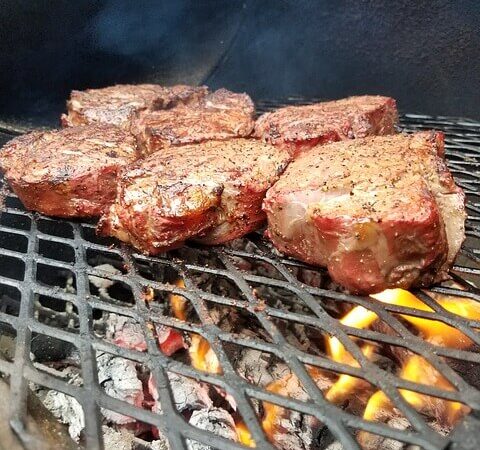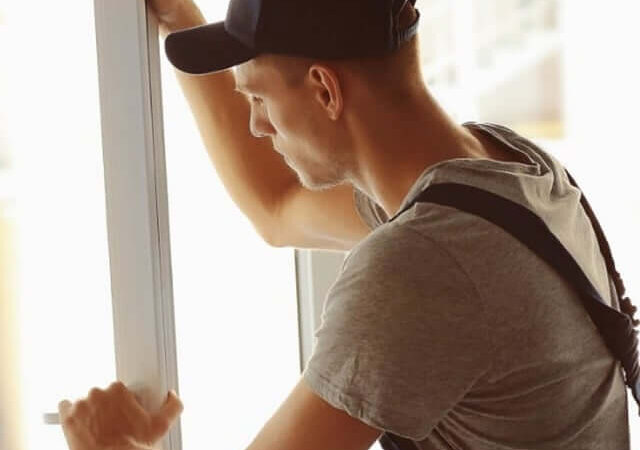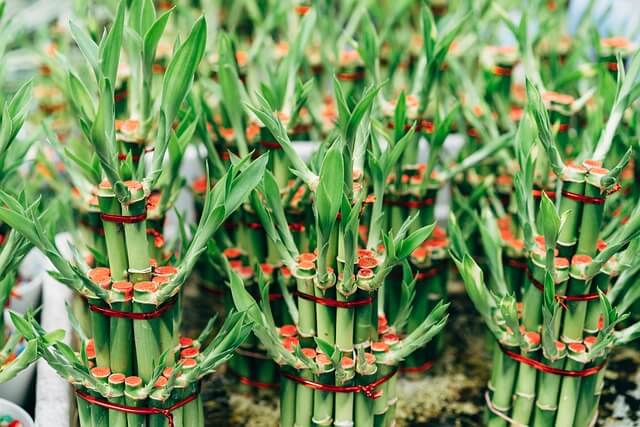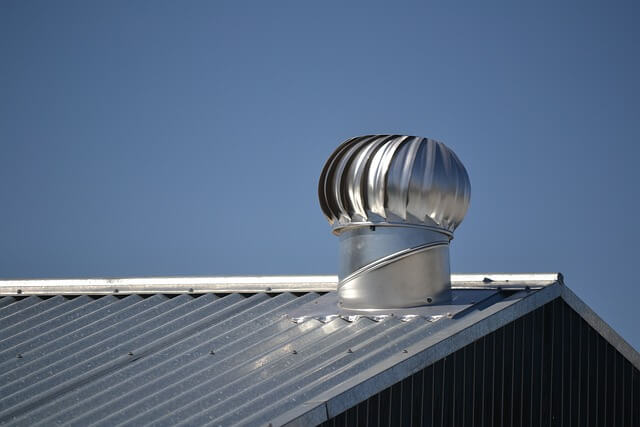The Complete Guide to Cleaning and Maintaining Hardwood Floors: Tips and Tricks for a Beautiful Finish
Hardwood floors are a beautiful and durable addition to any home. However, they require proper care and maintenance to keep them looking their best. This complete guide will provide all the information needed to clean and maintain hardwood floors, ensuring they stay in excellent condition for years to come.
The first step in maintaining hardwood floors is to establish a regular cleaning routine. This should include sweeping or vacuuming the floors to remove any dirt or debris that could scratch the surface. Additionally, it is important to clean up any spills or stains immediately to prevent them from setting into the wood. This guide will provide tips and tricks for effective cleaning methods that will keep hardwood floors looking their best.
Benefits of Hardwood Floors: Enhancing Your Home’s Beauty and Value
When it comes to home flooring options, hardwood floors have always been a top choice for homeowners. Their enduring popularity can be attributed to the numerous advantages they offer. From enhancing the aesthetic appeal of your home to increasing its overall value, hardwood floors are a wise investment that combines both beauty and practicality.
Durability and Longevity
One of the primary advantages of hardwood floors is their remarkable durability and longevity. These floors are built to withstand the test of time, making them an excellent long-term investment for your home. Unlike some other flooring materials that may wear out or become damaged over the years, hardwood floors can last for decades with proper care and maintenance.
The keyword “hardwood floors” is naturally integrated into this section, highlighting its importance in the context of durability and longevity.
Aesthetic Appeal
Hardwood floors are renowned for their timeless and elegant appearance. The natural beauty of wood enhances the visual appeal of any room, creating a warm and inviting atmosphere. The variety of wood species, colors, and finishes available allows homeowners to choose a style that complements their interior decor.
Incorporating “hardwood floors” into the subsection titles emphasizes its significance in enhancing the aesthetic appeal of a home.
Durability and Longevity
Hardwood floors are renowned for their exceptional durability and longevity. They have earned a well-deserved reputation for their ability to withstand heavy foot traffic and the test of time. In this article, we will delve into the key factors that contribute to the remarkable lifespan of hardwood floors and how to maintain their pristine appearance.
Understanding Hardwood’s Resilience
Hardwood floors owe their longevity to the inherent strength and durability of the wood itself. The dense, natural fibers of hardwood make it resistant to wear and tear, making it an ideal choice for high-traffic areas in your home. Whether you have children, pets, or frequent guests, hardwood floors can handle the daily challenges with grace.
The Role of Hardness Ratings
When choosing hardwood flooring, it’s essential to consider the wood’s hardness rating. This rating, often measured on the Janka scale, indicates the wood’s resistance to indentation and wear. Hardwood species with higher Janka ratings, such as oak or hickory, are particularly resilient and less prone to dents and damage.
Proper Care for Longevity
While hardwood floors are naturally durable, they still require proper care and maintenance to maximize their lifespan. Here are some essential tips to ensure your hardwood floors stay in pristine condition for decades to come:
Regular Cleaning
Frequent cleaning is crucial to prevent dirt and debris from scratching the surface of your hardwood floors. Use a soft-bristle broom or a vacuum cleaner with a hardwood floor attachment to remove loose particles. Regular sweeping or vacuuming prevents abrasive materials from causing unnecessary wear.
Avoid Excess Moisture
Excessive moisture can be detrimental to hardwood floors, leading to warping, cupping, or even mold growth. Clean up spills promptly and use a well-wrung mop for damp cleaning. Additionally, ensure your home maintains a stable indoor humidity level to prevent unnecessary expansion and contraction of the wood.
Protective Measures
Consider using area rugs and doormats in high-traffic areas, especially near entryways, to reduce the amount of dirt and grit that reaches your hardwood floors. Felt or rubber furniture pads can also protect against scratches and scuffs caused by heavy furniture.
Sanding and Refinishing
One of the unique advantages of hardwood floors is their ability to be sanded and refinished. Over time, even the most robust hardwood floors may develop scratches or wear in areas with heavy use. Sanding the surface to remove imperfections and refinishing it with a fresh coat of finish can rejuvenate your floors and restore their original beauty.
Professional Refinishing
While some homeowners may opt for DIY refinishing, professional refinishing services are recommended for the best results. Experienced professionals have the expertise and equipment to sand and refinish your hardwood floors efficiently and effectively. This process can significantly extend the life of your floors and keep them looking pristine.
A Cost-Effective Choice
When evaluating the longevity of hardwood floors, it’s essential to consider the long-term cost-effectiveness of this flooring option. While the initial installation cost may be higher than some alternatives, such as carpet or laminate, hardwood floors offer significant advantages in terms of lifespan and maintenance.
Long-Term Savings
Hardwood floors, with their durability and potential for refinishing, can save homeowners money over the years. Unlike other flooring materials that may require frequent replacement, hardwood floors can last for several decades with proper care. This longevity means fewer expenses related to repairs and replacements in the long run.
Preserving the Investment
In addition to the financial benefits, hardwood floors enhance the overall value of your home. When potential buyers assess a property, the presence of hardwood floors can significantly impact their perception of the home’s worth. This can be a crucial advantage if you decide to sell your house.
Increased Property Value
The enduring appeal and durability of hardwood floors can boost your property’s resale value. Homes with hardwood floors are often considered more desirable and can command higher prices in the real estate market. Thus, investing in hardwood floors not only benefits your daily living experience but also serves as a wise financial decision.
Enhancing Your Home’s Beauty: The Aesthetic Appeal of Hardwood Floors
Hardwood floors have long been celebrated for their aesthetic appeal, adding an unmistakable charm and elegance to any living space. In this article, we’ll explore how hardwood floors can enhance the visual beauty of your home, the wide range of design options they offer, and how you can customize them to suit your unique style.
Timeless Elegance
The timeless appeal of hardwood floors lies in their ability to transcend passing trends. Unlike some flooring materials that may go out of fashion, hardwood floors maintain their classic elegance year after year. Whether your home boasts a traditional, modern, or eclectic interior design, hardwood floors seamlessly integrate and elevate the aesthetic.
A Palette of Colors
Hardwood floors come in a diverse palette of colors, allowing you to choose the perfect shade to match your home’s decor. From the light, airy tones of maple to the deep, rich hues of walnut, there’s a hardwood color to suit every taste. Each wood species offers its unique character and charm.
Versatility in Design
One of the remarkable features of hardwood floors is their versatility in design. They serve as a blank canvas, ready to adapt to any style you envision for your home. Whether you prefer a rustic farmhouse look, a sleek and modern ambiance, or a cozy cottage atmosphere, hardwood floors can seamlessly accommodate your design aspirations.
Patterns and Layouts
Hardwood floors can be installed in various patterns and layouts, such as herringbone, chevron, or a classic straight lay. These patterns can create visual interest and give your space a unique character. The versatility of hardwood allows you to express your creativity in designing the perfect floor for your home.
Customization Options
Hardwood floors offer a high degree of customization. You can tailor your flooring to meet your specific design preferences through various customization options, including:
- Stains: Choose from a wide array of stains to enhance or alter the natural color of the wood.
- Finishes: Decide on the level of shine and protection with different finishes, from matte to high-gloss.
- Textures: Opt for distressed, hand-scraped, or wire-brushed textures to add depth and character.
- Inlays: Incorporate intricate inlays or borders for a personalized touch.
Harmonizing with Furniture
Hardwood floors provide an excellent backdrop for your furniture and decor. Their neutral and adaptable nature allows your furnishings to shine. You can easily coordinate your interior design elements, from area rugs to wall colors, with the timeless beauty of hardwood.
Adds Value to Your Home
Hardwood floors are a great investment for any homeowner, as they can add value to your home. They are a desirable feature for potential buyers and can increase the resale value of your home. Additionally, hardwood floors are a low-maintenance flooring option that can save you money in the long run.
Overall, hardwood floors are a durable, timeless, and valuable investment for any home.
Types of Hardwood Floors
Solid Hardwood
Solid hardwood floors are made from a single piece of wood and are known for their durability and longevity. They are available in a variety of wood species, such as oak, maple, and cherry, and can be stained or finished to achieve a desired look. Solid hardwood floors are usually nailed down to a subfloor and require professional installation.
One of the advantages of solid hardwood floors is that they can be sanded and refinished multiple times, which can extend their lifespan. However, they are susceptible to moisture and temperature changes, which can cause them to warp or buckle.
Engineered Hardwood
Engineered hardwood floors are made from a thin layer of real hardwood that is bonded to a plywood or high-density fiberboard (HDF) core. They are designed to resist moisture and temperature changes, making them a good choice for areas with high humidity or fluctuating temperatures.
Engineered hardwood floors are available in a wide range of wood species, finishes, and styles, and can be installed using a variety of methods, including floating, glue-down, or nail-down. They are also more affordable than solid hardwood floors and can be sanded and refinished once or twice, depending on the thickness of the top layer.
Overall, both solid and engineered hardwood floors have their advantages and disadvantages, and the choice between the two depends on factors such as budget, location, and personal preference.
Pre-Cleaning Preparation
Assessing Your Floor’s Condition
Before starting the cleaning process, it is important to assess the condition of your hardwood floor. Look for any scratches, dents, or stains that may require special attention. If you notice any deep scratches or dents, it may be necessary to sand and refinish the affected area.
It is also important to consider the type of finish on your hardwood floor. If you are unsure of the type of finish, a simple test can be done by rubbing a small amount of denatured alcohol on an inconspicuous area of the floor. If the finish becomes soft or sticky, it is likely a shellac or lacquer finish. If it remains unchanged, it is likely a polyurethane or other synthetic finish.
Gathering Necessary Supplies
To properly clean and maintain your hardwood floor, it is important to have the right supplies on hand. Here are some essential items you will need:
- Broom or vacuum cleaner with a hardwood floor attachment
- Microfiber mop or cloth
- Hardwood floor cleaner (make sure it is specifically designed for your type of finish)
- Bucket
- Soft-bristled brush or sponge
- Protective gloves (if using harsh chemicals)
It is important to note that using the wrong type of cleaner or tool can damage your hardwood floor. Avoid using abrasive cleaners, steel wool, or wax-based products. Additionally, be cautious when using water on your hardwood floor, as excessive moisture can cause damage.
Daily Cleaning Techniques
To keep hardwood floors looking their best, it’s important to establish a daily cleaning routine that includes sweeping, dusting, and vacuuming. These simple techniques can help remove dirt, dust, and debris that can scratch and damage the surface of your floors over time.
Keeping It Clean: The Importance of Regular Sweeping for Hardwood Floors
Sweeping is a fundamental step in maintaining the beauty and longevity of your hardwood floors. In this article, we will explore the significance of regular sweeping, the right tools for the job, and effective techniques to keep your hardwood floors in pristine condition.
Why Sweeping Matters
Sweeping serves as the first line of defense against the gradual wear and tear that hardwood floors can endure over time. Here are some compelling reasons why sweeping should be an integral part of your floor care routine:
Preventing Surface Scratches
Loose dirt, sand, and grit that accumulate on your hardwood floors can act like abrasive particles. As foot traffic traverses over these particles, they can scratch and dull the surface of the wood. Regular sweeping removes these potential hazards, safeguarding the beauty of your floors.
Preserving Finish and Shine
In addition to protecting the wood itself, sweeping helps preserve the finish and shine of your hardwood floors. Dust and debris can settle on the surface, diminishing the luster and leaving your floors looking lackluster. Frequent sweeping prevents this buildup, ensuring your floors maintain their natural beauty.
The Right Tools for the Job
To effectively sweep your hardwood floors, it’s essential to use the appropriate tools. Not all brooms and mops are created equal when it comes to hardwood floor care. Here’s what you need to know:
Soft-Bristled Broom
A soft-bristled broom is your go-to tool for sweeping hardwood floors. The gentle bristles effectively capture dirt and dust without scratching the wood. Look for a broom with fine, natural bristles or a microfiber mop head designed for hardwood surfaces.
Microfiber Mop
Microfiber mops are an excellent choice for dry sweeping. They have the advantage of attracting and trapping dust and particles, rather than pushing them around. Microfiber mop heads are easily washable and reusable, making them an eco-friendly option.
Vacuum Cleaner with a Hardwood Floor Attachment
If you prefer the convenience of a vacuum cleaner, opt for one with a hardwood floor attachment. This attachment is specifically designed to avoid scratching and damaging the surface while effectively removing dirt and debris. Ensure your vacuum has adjustable settings to control suction strength on delicate hardwood.
Effective Sweeping Techniques
To maximize the benefits of sweeping and avoid common pitfalls, here are some effective techniques to keep in mind:
Start at the Edges
Begin your sweeping routine along the edges of the room, working your way towards the center. This approach prevents dirt from being pushed into corners or under furniture, making it easier to collect.
Use Gentle Strokes
When sweeping, use gentle and controlled strokes to avoid excessive force. Avoid pressing down too hard on the broom or mop, as this can potentially scratch the surface. Let the bristles or mop head do the work.
Sweep Frequently
Regularity is key to successful floor maintenance. Aim to sweep your hardwood floors at least once a day or as needed, depending on foot traffic and environmental factors. High-traffic areas may require more frequent attention.
Clean Your Tools
Ensure your broom or mop is clean and free of debris before each use. Dirty tools can reintroduce dirt onto your floors. Microfiber mop heads should be washed regularly to maintain their effectiveness.
Dusting: The Key to Maintaining Pristine Hardwood Floors
Dusting is a vital component of hardwood floor care, playing a crucial role in preserving their beauty and cleanliness. In this comprehensive guide, we’ll explore the importance of dusting, the right tools for the job, and effective techniques to ensure your hardwood floors remain in impeccable condition.
The Significance of Dusting
Dusting goes beyond aesthetics; it contributes to the overall health and longevity of your hardwood floors. Here’s why regular dusting is essential:
Allergen Removal
Dust, pet hair, and allergens can accumulate on the surface of hardwood floors, posing health risks to occupants, especially those with allergies or respiratory issues. Dusting eliminates these irritants, creating a healthier indoor environment.
Surface Protection
Dust particles may seem harmless, but when left unchecked, they can act as abrasive agents that gradually wear down the finish and even scratch the wood. Regular dusting forms a protective barrier against potential damage, preserving the beauty of your floors.
Choosing the Right Tools
Selecting the appropriate tools for dusting is crucial to ensure your efforts are effective and gentle on your hardwood floors. Here are the essential tools you’ll need:
Microfiber Cloth or Mop
A microfiber cloth or mop is an excellent choice for dry dusting. Its fine fibers attract and trap dust and particles efficiently, preventing them from becoming airborne and settling back on your floors. Opt for a lint-free, high-quality microfiber tool.
Soft, Lint-Free Cloth
For a traditional approach, a soft, lint-free cloth can also be used for dusting. Ensure it’s clean and free of any debris that could scratch the surface. Microfiber and lint-free cloths are widely available and highly effective.
Avoid Abrasive Products
Steer clear of abrasive cleaning products, as they can damage your hardwood floors. Harsh chemicals or rough scouring pads should be avoided at all costs. Stick to gentle, floor-friendly cleaning solutions if needed.
Effective Dusting Techniques
To make the most of your dusting routine and safeguard your hardwood floors, follow these effective techniques:
Dry Dusting
Begin by gently dry dusting your floors with a microfiber cloth or mop. Start at one end of the room and work your way towards the other, ensuring you cover the entire surface. Pay attention to corners and edges where dust tends to accumulate.
Regularity Matters
The frequency of dusting depends on your household’s needs and the level of foot traffic. In most cases, dusting at least once or twice a week is recommended. High-traffic areas or homes with pets may require more frequent attention.
Minimize Airborne Dust
To prevent dust particles from becoming airborne and resettling, it’s advisable to use a microfiber cloth or mop with a slightly dampened surface. Avoid excessive moisture, as standing water can harm your hardwood floors.
Avoid Sweeping
While sweeping may seem like a quick solution, it can sometimes push dust around rather than effectively capturing it. Additionally, the bristles of brooms may scratch the wood surface. Stick to the gentle touch of microfiber for optimal results.
Vacuuming
Vacuuming your hardwood floors with a soft-bristled attachment can help remove dirt, dust, and debris that may be difficult to pick up with a broom or dust mop. Be sure to use a vacuum cleaner that’s specifically designed for hardwood floors and to avoid using a beater bar, which can scratch the surface of the wood.
By incorporating these daily cleaning techniques into your routine, you can help keep your hardwood floors looking their best for years to come.
Deep Cleaning Methods
Mopping
Regular mopping is a great way to keep hardwood floors clean, but deep cleaning requires a little more effort. To deep clean hardwood floors, start by sweeping or vacuuming the floor to remove any loose dirt or debris. Then, use a mop that is specifically designed for hardwood floors and a cleaning solution that is safe for hardwood. Be sure to wring out the mop well to avoid saturating the floor with too much water.
Polishing
Polishing hardwood floors can help to restore their shine and protect them from scratches. To polish hardwood floors, start by cleaning the floor with a hardwood floor cleaner. Once the floor is clean and dry, apply a hardwood floor polish with a clean cloth or mop, following the manufacturer’s instructions. Be sure to work in small sections and buff the floor with a clean, dry cloth after applying the polish.
Steaming
Steam cleaning is another effective way to deep clean hardwood floors. However, it’s important to use a steam cleaner that is specifically designed for hardwood floors and to follow the manufacturer’s instructions carefully. Be sure to avoid using too much water, as excess moisture can damage the wood. Steam cleaning can help to remove dirt and grime from deep within the wood grain, leaving your floors looking clean and refreshed.
Remember, no matter which deep cleaning method you choose, it’s important to always follow the manufacturer’s instructions and to use products that are safe for hardwood floors. With the right care and maintenance, your hardwood floors can stay beautiful for years to come.
Stain Removal
Hardwood floors are an attractive and durable flooring option for any home. However, they are also prone to staining, which can be frustrating for homeowners. Fortunately, there are several methods for removing stains from hardwood floors, depending on the type of stain and the severity of the damage.
Immediate Action
The first step in removing stains from hardwood floors is to act quickly. If a spill occurs, it is important to clean it up immediately to prevent the stain from setting in. Use a clean, dry cloth to absorb as much of the spill as possible. Then, use a damp cloth to clean the area thoroughly. Avoid using too much water, as this can cause damage to the wood.
Chemical Treatments
For stubborn stains, chemical treatments may be necessary. There are several products available that are specifically designed for removing stains from hardwood floors. These products can be purchased at most home improvement stores. Be sure to follow the manufacturer’s instructions carefully, and test the product on a small, inconspicuous area of the floor before using it on a larger stain.
Scratch Repair
Scratches can also be a problem on hardwood floors, especially in high-traffic areas. To repair scratches, first clean the area thoroughly. Then, use a wood filler to fill in the scratch. Once the filler has dried, sand the area lightly to smooth it out. Finally, apply a coat of stain or finish to match the rest of the floor.
Removing stains from hardwood floors can be a challenging task, but with the right tools and techniques, it can be done. Immediate action, chemical treatments, and scratch repair are all effective methods for removing stains from hardwood floors. By following these tips, homeowners can keep their floors looking beautiful for years to come.
Preventative Measures
Using Floor Protectors
One of the easiest ways to prevent scratches and damage to hardwood floors is by using floor protectors. These can be in the form of felt pads, rubber pads, or plastic glides that can be attached to the bottom of furniture legs. By using floor protectors, furniture can be moved around without scratching the hardwood floor. It is important to ensure that the floor protectors are kept clean and replaced when they become worn out.
Controlling Humidity
Hardwood floors can be affected by changes in humidity levels. High humidity can cause the wood to expand and buckle, while low humidity can cause the wood to shrink and crack. It is recommended to maintain a humidity level between 35-55% to prevent damage to the hardwood floor. A humidifier or dehumidifier can be used to control humidity levels, especially in areas with extreme weather conditions.
Avoiding Direct Sunlight
Direct sunlight can cause hardwood floors to fade and lose their luster over time. It is recommended to use blinds or curtains to block out direct sunlight during peak hours of the day. If this is not possible, it is recommended to use area rugs or furniture to cover the areas exposed to direct sunlight. This will help to prevent discoloration and damage to the hardwood floor.
By following these preventative measures, hardwood floors can be kept in good condition and last for many years. Regular maintenance and cleaning will also help to keep the hardwood floor looking its best.
Maintenance Schedule
Daily Tasks
Maintaining the cleanliness of your hardwood floors is essential to prevent scratches and other damage. Daily tasks include sweeping, vacuuming, or dry mopping to remove dirt and debris. It is also important to wipe up any spills or stains immediately to prevent them from setting in.
Weekly Routines
In addition to daily cleaning, weekly routines should include mopping with a slightly damp mop and a hardwood floor cleaner. Avoid using excess water as it can damage the wood. Also, be sure to remove any furniture or objects that may scratch the floor before cleaning.
Seasonal Care
Seasonal care is crucial to maintain the beauty and longevity of your hardwood floors. During the winter months, use a humidifier to prevent the wood from drying out and cracking. In the summer, use shades or blinds to protect the floors from direct sunlight, which can cause discoloration. It is also recommended to have the floors professionally cleaned and polished every few years to maintain their luster.
By following a regular maintenance schedule, your hardwood floors will not only look great but also last for many years to come.
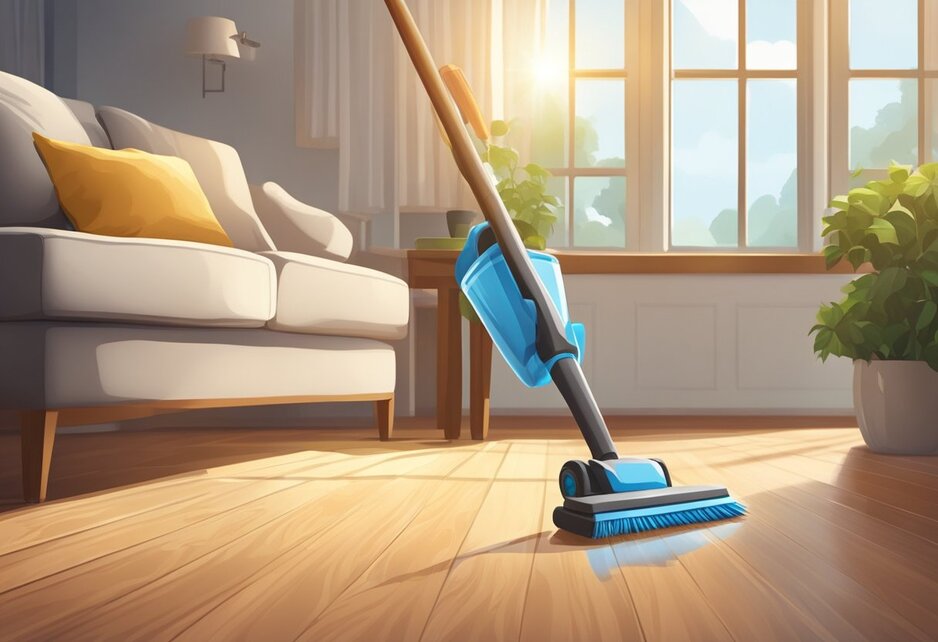
Professional Services
When to Hire a Professional
While regular cleaning and maintenance can keep hardwood floors looking great, there are times when it’s necessary to call in a professional. Here are some situations when you may want to consider hiring a professional service:
- Deep scratches or gouges: If your hardwood floors have deep scratches or gouges, it may be necessary to hire a professional to sand and refinish the affected area.
- Water damage: If your hardwood floors have been damaged by water, it’s important to act quickly to prevent further damage. A professional service can help remove excess water, dry the floors, and prevent mold growth.
- Stains: If you have stubborn stains on your hardwood floors that won’t come out with regular cleaning, a professional service can help remove them using specialized equipment and techniques.
- Wax buildup: If you’ve been using wax on your hardwood floors and have noticed a buildup, a professional service can help remove the excess wax and restore the natural beauty of your floors.
Choosing a Service Provider
When choosing a professional service for your hardwood floors, it’s important to do your research and choose a reputable provider. Here are some tips to help you choose the right service provider:
- Check references: Ask for references from past customers and follow up with them to get an idea of the quality of service provided.
- Look for certifications: Look for service providers who are certified by organizations such as the National Wood Flooring Association (NWFA) or the Institute of Inspection, Cleaning and Restoration Certification (IICRC).
- Get multiple quotes: Get quotes from multiple service providers to compare prices and services offered.
- Ask about insurance: Make sure the service provider has liability insurance to protect against any damage that may occur during the cleaning or maintenance process.
By following these tips and choosing a reputable service provider, you can ensure that your hardwood floors are properly maintained and looking their best for years to come.
Troubleshooting Common Issues
Squeaky Boards
Squeaky boards are a common issue with hardwood floors that can be easily fixed. The cause of squeaky boards is usually due to loose floorboards or subfloor. To fix this issue, locate the squeaky area and screw the subfloor to the joist. If the squeak persists, try lubricating the area with talcum powder or powdered graphite. If the squeak still persists, it may be necessary to consult a professional.
Warping
Warping is another common issue with hardwood floors, especially in areas with high humidity levels. To prevent warping, maintain a consistent humidity level in the room. If warping has already occurred, try sanding and refinishing the affected area. If the warping is severe, it may be necessary to replace the affected boards.
Discoloration
Discoloration of hardwood floors is usually caused by exposure to sunlight or water damage. To prevent discoloration, use window treatments to block out direct sunlight and clean up any spills or leaks immediately. If discoloration has already occurred, try sanding and refinishing the affected area. If the discoloration is severe, it may be necessary to replace the affected boards.
By following these tips, homeowners can troubleshoot common issues with hardwood floors and maintain their floors for years to come.
Frequently Asked Questions
What is the most effective method for cleaning hardwood floors?
The most effective method for cleaning hardwood floors is to use a damp mop or cloth with a hardwood floor cleaner that is specifically designed for use on hardwood floors. Avoid using excessive water or harsh chemicals that can damage the finish on the hardwood floors.
Can I use vinegar to clean my hardwood floors without causing damage?
While vinegar is a natural cleaner, it is not recommended to use it on hardwood floors as it can damage the finish. Instead, use a hardwood floor cleaner that is specifically designed for use on hardwood floors.
How often should hardwood floors be professionally cleaned?
It is recommended to have hardwood floors professionally cleaned every 1-2 years, depending on the amount of foot traffic and wear and tear on the floors. Regular maintenance and cleaning can extend the life of the hardwood floors.
What are the best practices for daily maintenance of hardwood floors?
The best practices for daily maintenance of hardwood floors include sweeping or vacuuming regularly to remove dirt and debris, wiping up spills immediately, and using furniture pads to prevent scratches and dents.
Is it safe to steam clean hardwood flooring, and if so, how frequently?
It is not recommended to steam clean hardwood flooring as the excessive moisture can damage the finish and cause warping or buckling of the hardwood planks. Instead, use a hardwood floor cleaner that is specifically designed for use on hardwood floors.
What should I avoid when cleaning my hardwood floors to prevent damage?
To prevent damage to hardwood floors, avoid using excessive water or harsh chemicals, using abrasive scrubbers or steel wool, and allowing spills to sit for an extended period of time. Additionally, avoid dragging heavy furniture across the hardwood floors and use furniture pads to prevent scratches and dents.


